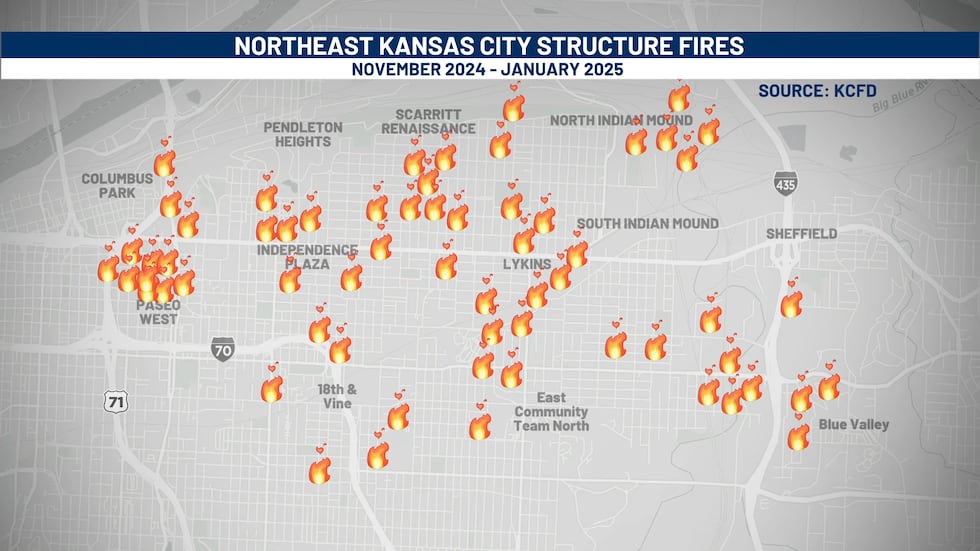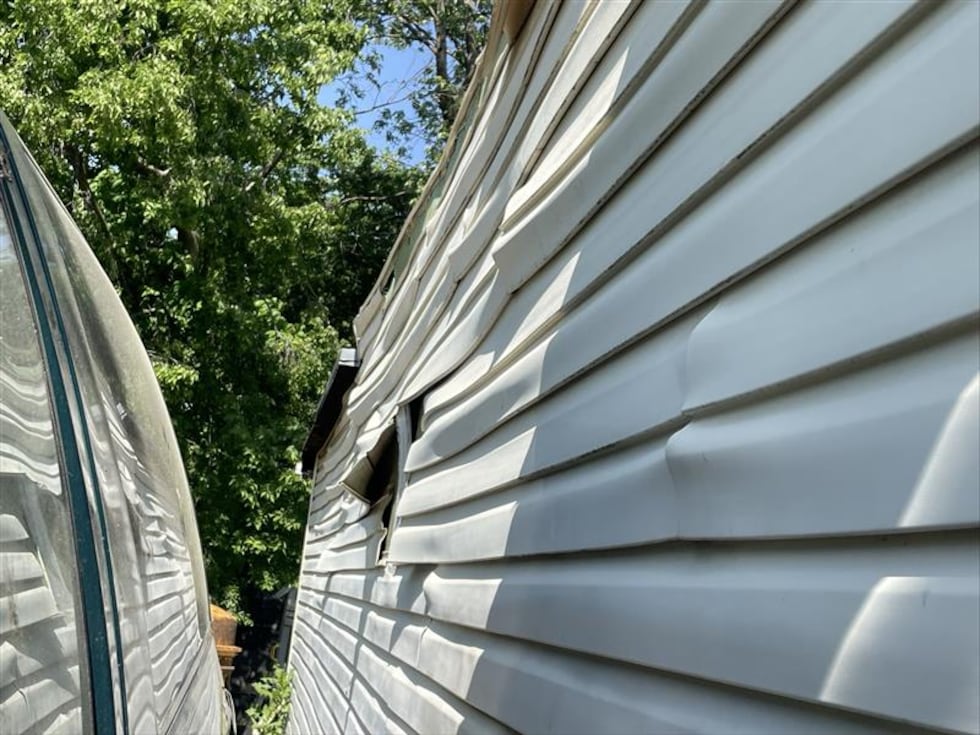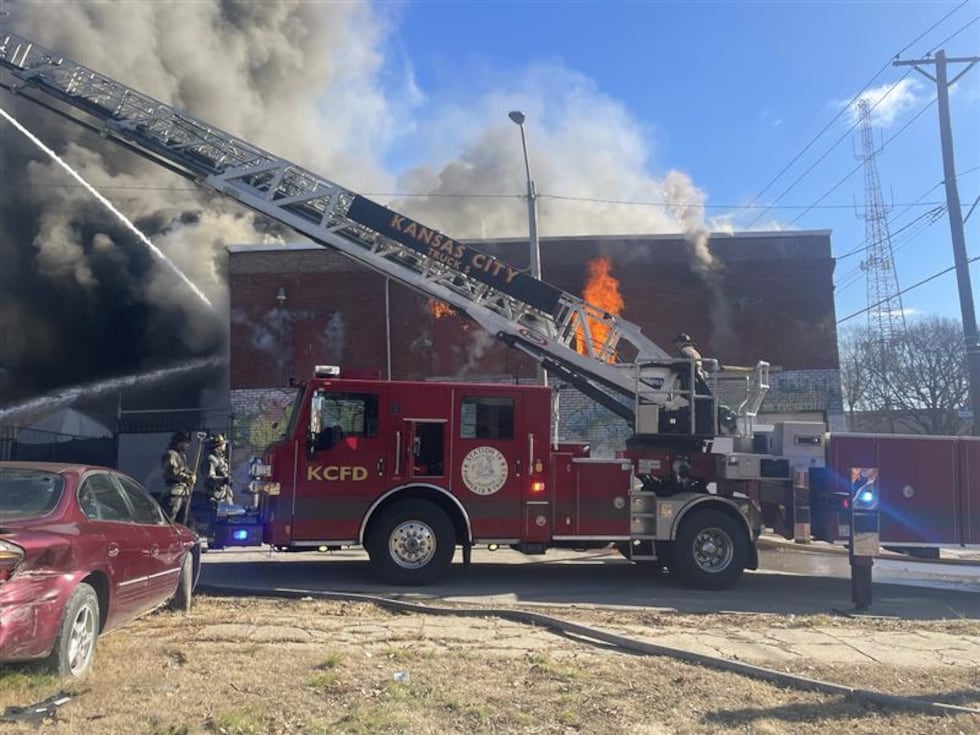Unsafe hotspots: What Kansas City and residents are doing to get ahead of vacant structure fires
KANSAS CITY, Mo. (KCTV) - There is a growing problem in Kansas City, vacant buildings are hotspots for fires, especially in the winter. With the challenges these bring, neighborhoods, residents, and the city are searching for a way to avoid another winter of smoke and flames.
A chronic outbreak in the Northeast
From November 2024 to January 2025, there were 78 structure fires in Kansas City’s Northeast, 39 of which were in vacant buildings, according to the Kansas City Fire Department. There have been more since the winter.

This chronic outbreak has left many homeowners frustrated, waiting for the buildings to be repaired or demolished.
Near 700 Olive Street, a grass lot sits near multiple apartment buildings.
“There were apartments that used to sit right here,” said Brenda Nelson, who lives in the Northeast.
For 25 years, Nelson has lived next door to this apartment complex.
“Back in the day, when we first moved in here, there were friends that grew up with us, that we went to school with our kids, and that had kids that our kids were being raised with,” said Nelson.
It wasn’t until a couple of years ago that the building next door closed and tenants were moved to other units.
Nelson said that in May 2024, everything changed.
“We woke up to sirens, I mean, we didn’t know what was going on. We have friends around the neighborhood that are like family that live here that said, ‘Hey! Knock, knock. You got a fire. You got a fire,’” said Nelson.
It was a scary moment for Nelson and her family. The flames from that fire melted some of the siding on their house.

Nelson said since last May, there have been six fires at the vacant building next door.
She said many people were going in and out, making it their home. She would talk with a maintenance man who worked there, but eventually, he got moved to another location.
“I would call him to let him know, ‘Hey, you’ve got people in there,” he boarded it up because the city was telling them you gotta board it up, These people would go in there and tear the boards off because they lived there,” said Nelson. “I’m concerned. I have babies. I mean,there was a lot of stuff going on in here.”
Since their siding melted, Nelson said it has been a struggle to the owners of the complex.
“Who do you guys go through? Who are the main people? Because we tried to and couldn’t find out. Then we find out (the owners) are out of state. Okay, so who do you go through?” said Nelson. “We didn’t replace (the siding) when we were going to because the last fire in January probably would have taken it again. We are still fighting. We are trying to get the money situation resolved to finish and do what we gotta do.”
She said they had to add cameras to their property because they feared for their safety.
“All of the time that we have lived here, we never had cameras on our home. We never had to worry about stuff being taken or worry about what was going on at our home, but when we started seeing all of this going on--that’s what is scary. That is when we put on our cameras,” said Nelson.
About 10 months after the first fire, the building was finally torn down.
“I felt some kind of relief but not all, because with the apartments still having a lot of vacancies,” said Nelson. “I don’t see this as okay even though it is gone, until they fix the issue through the complex.”
However, that is not the case for all vacant structures.
Residents feel it is a safety concern when these buildings sit for so long and wonder why there is a delay. KCTV5 Investigates took these questions to the City’s Neighborhood Services.
The ‘Dangerous Buildings’ process
In the City of Kansas City, there is a ‘Dangerous Buildings’ team. Whenever a fire happens, the department responds.
From there, they decide if the building is safe and habitable. If it isn’t, it is put on the Dangerous Buildings list.
“It’s a long process,” said the City of Kansas City Neighborhood Services Director, Forest Decker. “We have worked 900 cases in the last three years.”

Decker said of those 900 cases, about 70-80% are from fires. He said about 600 of those have been repaired or demolished by the property owners.
Decker told us that they can figure it out pretty quickly if the building needs to be repaired or demolished. Even so, on average, a case can stay open for 600 days. Still, according to Decker, there technically isn’t a backlog of cases.
“A property can be safe but still not be habitable, and it still be on our dangerous buildings list,” said Decker. “Sometimes a building is made safe really quickly, just with a beam or clo the windows or anything else, it is safe to the public but it stays on our list till it is completely repaired.”
About 80% of the cases, Decker says, are vacant buildings. He said part of the next steps include finding the owner, which can be difficult.
“We see a lot of out-of-town ownership--people who don’t have skin in the game here in Kansas City,” said Decker. “In those cases, we have to go through a process where we have to exhaust everybody on the title by trying to them, sending them notarized, ed letters, we have to post the building for a certain number of days in a big visible posting before we can take action.”
He said that the process can create challenges, but they try to avoid demolition as much as possible.
“We try not to reduce the housing stock in Kansas City. We obviously have a housing crisis in Kansas City and nationally. So if there is any chance of a property being able to be repaired, we go through every length we possibly can to do that,” said Decker.
If an emergency demolition is necessary, it sometimes comes at the City’s expense.
“In which case, we’d place a lien on the property at that point,” said Decker. He added, “In three years, we have demolished 262 structures, so we demolish a little less than 100 a year out of the city dollars.”
He said on average it costs $12,000-$15,000 to demolish a home. It can cost anywhere from $30,000-$100,000 to demolish apartments or bigger buildings.
Decker said their biggest issue is a vacancy. While the properties sit waiting for the next steps, it can lead to more fires and other issues.
They are working to decrease the number of vacant structures and it’s something that has caught the attention of The Historic Northeast Coalition and City Councilwoman Melissa Robinson.
A proactive vs. reactive approach
Earlier this spring, the Kansas City City Council ed a resolution directing the City Manager to work in collaboration with the Historic Northeast Coalition to address this chronic outbreak of fires and prevent future fires.
“Let’s be proactive rather than reactive,” said KCMO Third District Councilwoman Melissa Robinson.
This resolution allows the city, residents, and neighborhood groups to take more action this summer.
They are looking at multiple avenues to make sure next winter is different, such as:
- Best practices for preventing fires
- Collaboration with the Office of Unhoused Solutions to help the houseless community while addressing break-ins and fires
- Creating a map to track vacant buildings and lots.
“We need to know what you feel like the solutions are, and what you feel like the expectations should be,” said Councilwoman Robinson. “Houseless people deserve an equitable investment.”
The city is also finding ways to ensure both local and out-of-town owners are held able, such as standards for boarding up buildings or creating a vacant land tax.
“There has to be some investment that they are making to ensure that everyone that lives in the community is okay,” said Councilwoman Robinson. “Really looking out for out-of-town owners who are not keeping up their property. They are having these vacant structures and they are just sitting on them. There has to be some investment that they are making to ensure that everyone that lives in the community is okay.”
KCFD has set a goal to reduce fires by 20% in the Northeast to try and avoid another dangerous winter.
While this plan is in the early stages, residents like Nelson feel like this is a good start.
“Be able to help us, and people like us, to feel safe and not have to worry about our homes getting destroyed and keep our babies safe,” said Nelson.
In the meantime, the City encourages anyone 311 or file a report in the myKCMO app if you see an issue at a vacant building in your neighborhood.
The city plans to start meeting with neighbors this summer to develop solutions and ensure everyone has a say so that this winter, smoke and sirens are less of a worry.
For more KCTV5 Special Reports, click here.
Copyright 2025 KCTV. All rights reserved.










